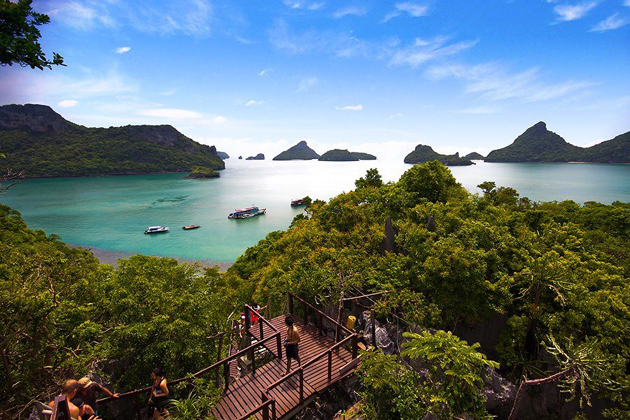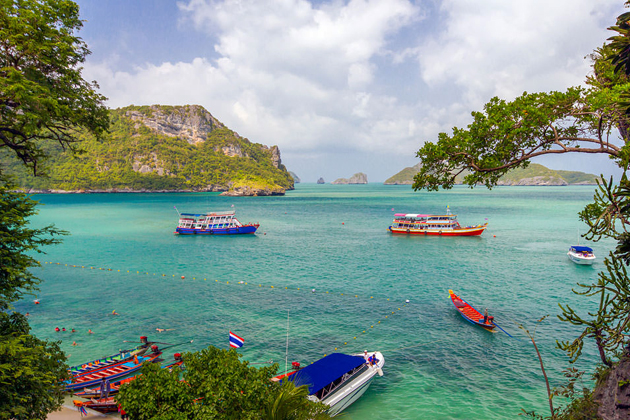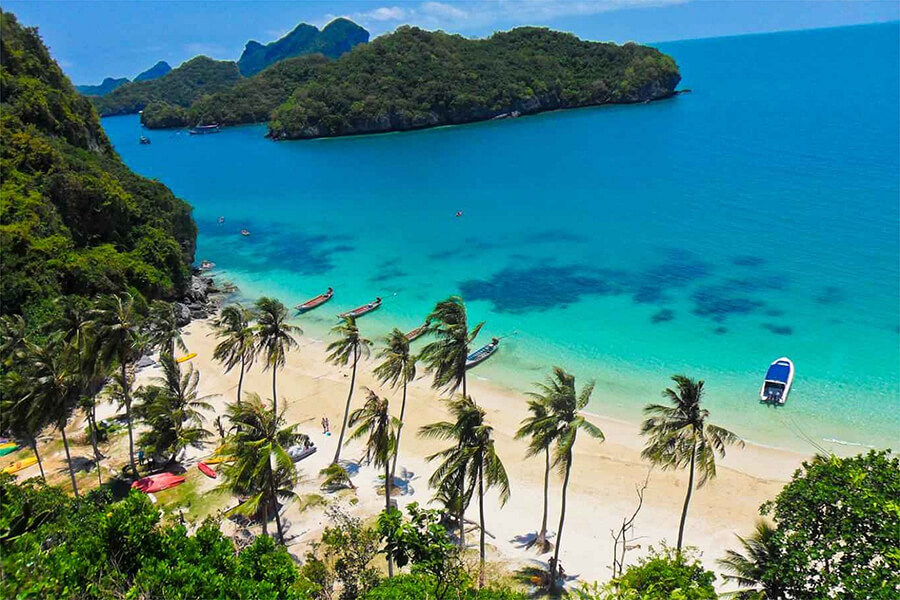One of the most attractive places included in Koh Samui shore excursions is the Ang Thong National Park. Established as a marine national park in 1980, Mu Ko Ang Thong National Park is an archipelago of 42 islands covering 102 km² at the shore of the Surat Thai Province in the Gulf of Thailand. The park is registered as a Ramsar site by Ramsar Convention, an international treaty for recognition of important wetlands.

The islands cover 18km² of the park, most of which rise from the sea to 10-400 meters above sea level such as Ko Phaluai, Ko Wua Ta Lap, Ko Mae Ko, Ko Sam Sao, Ko Hin Dap, Ko Nai Phut and Ko Phai Luak. The highest peak is located on Ko Phaluai at 396m above the sea level. Islands consist mainly of rugged and steep limestone hills, sinkholes, caves and inland marine lakes. There is one nomadic village at Ko Wua Ta Lap and one other at Ko Phaluai, other islands are uninhabited. The forests consist mainly of dry evergreen forest on bigger islands, also limestone forest and minor planted mangrove forest around the beaches and bays. Among the plants, Ang Thong Lady's Slipper Orchid (Paphiopedilum Ang Thong) is an endemic species found only in Mu Ko Ang Thong National Park.

The number of animal species is limited, 16 mammals, around 50 bird, 14 reptile and 5 amphibian species. Some of the mammal species on the islands are dusky leaf monkey, long-tailed macaque, leopard cat, fishing cat, wild boar and smooth-coated otter. Few of bird species are the collared kingfisher, white-bellied sea eagle, brahminy kite, black baza, oriental pied hornbill, Eurasian woodcock, pacific reef heron and common hill myna. There are few diving sites on the northern islands, more ideal for snorkeling. The average depth of the sea is around 10m with low visibility due to heavy sediment from the Tapi River on the mainland. Diving on one of the coral gardens may give an opportunity to see marine species like the green sea turtle, hawksbill sea turtle, and yellow-spotted trevallies. Best time for diving is February to October with the best visibility around March or April.




